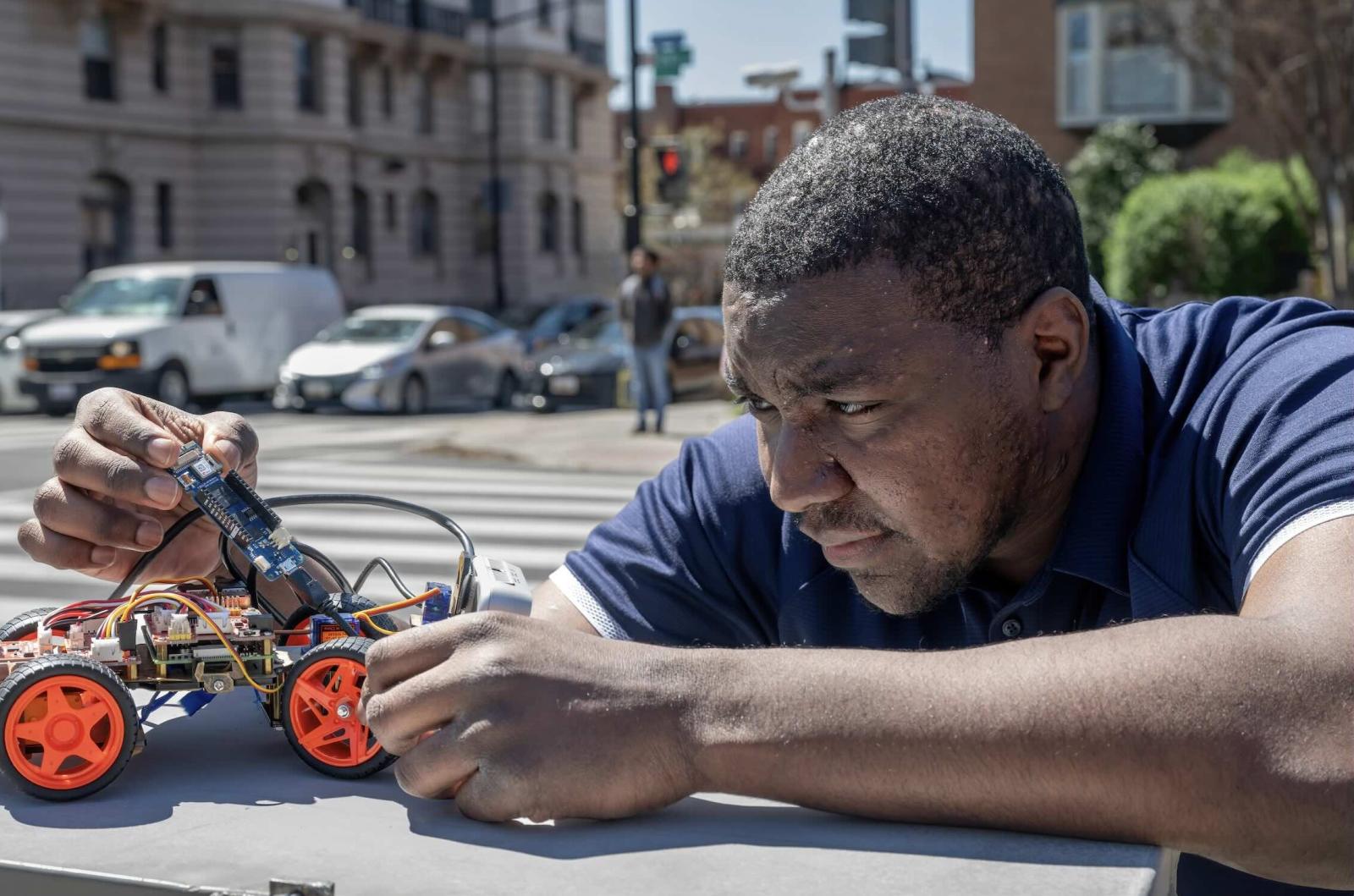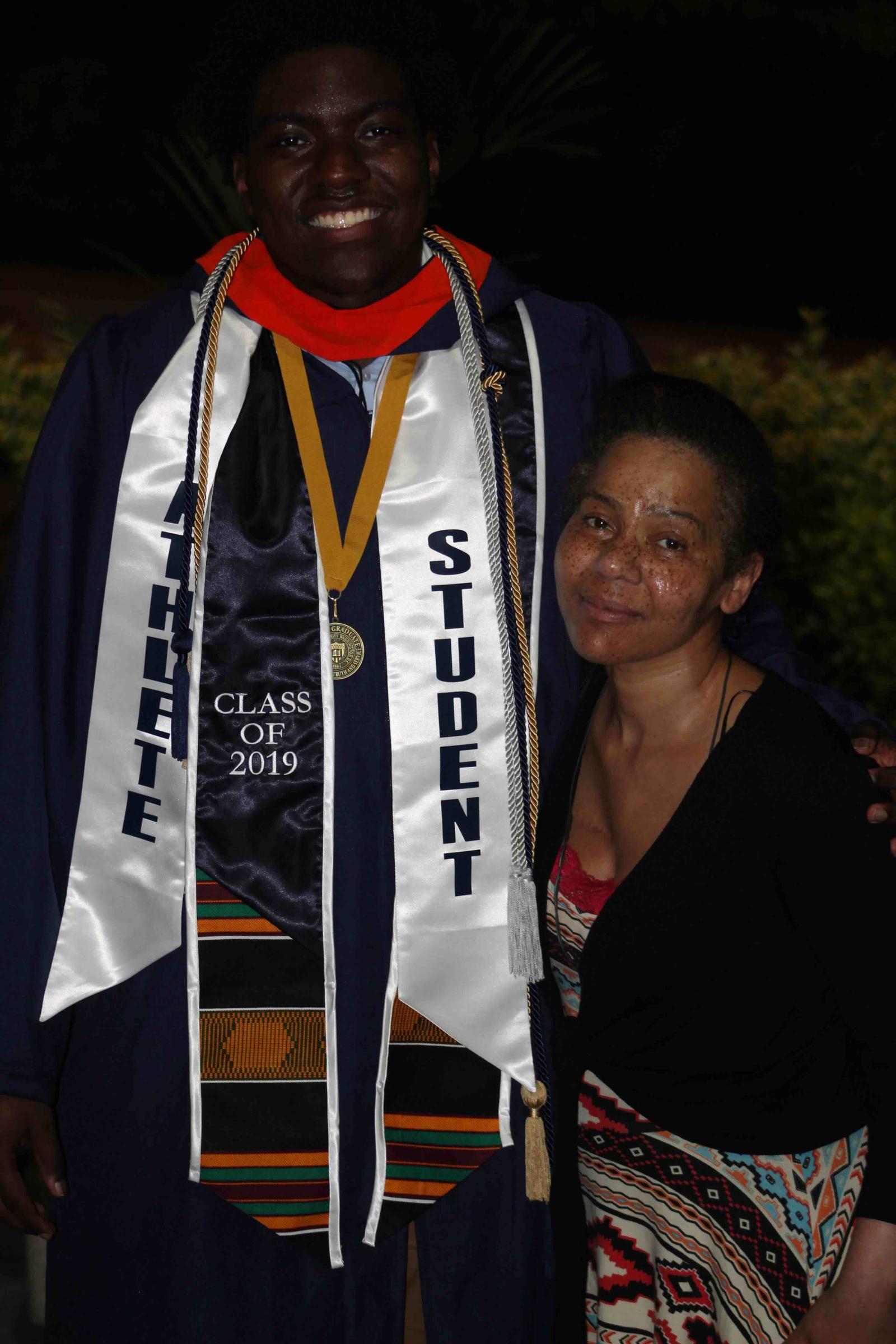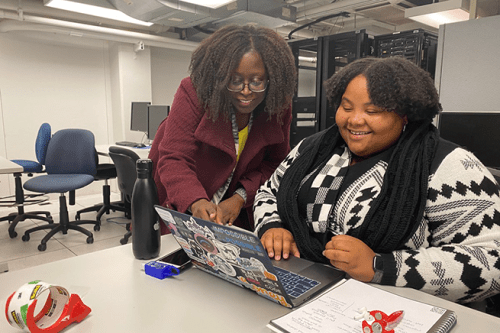While most drivers in D.C. get frustrated by narrow streets and unpredictable traffic jams, Cameron Lewis — a 2025 electrical engineering doctoral candidate at Howard University — sees patterns, problems, and possibilities.
His research zeroes in on one high-stakes scenario: how to clear paths for emergency vehicles using advanced sensors and quantum-enhanced mapping.
“How can I think about it beforehand,” he asks, “before you hear the siren and suddenly everyone’s scrambling, getting mad at each other?”
While most drivers already reroute instinctively, Lewis envisions a future where sensors alert drivers to approaching emergency vehicles, allowing GPS to reroute traffic before congestion builds — keeping both drivers and responders moving freely. It’s a quantum challenge.
Lewis presented his research at the inaugural HBCU CHIPS Network Conference April 3, a landmark event bringing together over 20 HBCUs, industry leaders, and federal partners to advance semiconductor research and high-tech workforce development. The conference was a highlight of Howard Research Month and underscored the university’s newly earned R1 status for top-tier research.
The CHIPS conference featured breakout sessions on topics ranging from quantum photonics to artificial intelligence in chip design and showcased research from HBCU faculty and students like Lewis. University leaders emphasize that achieving top research status helps create career opportunities for students in a competitive, rapidly growing field supported by federal funding.
“This network of HBCU researchers didn’t just emerge overnight — it was seeded years ago by visionaries and has now grown into something truly historic,” said Bruce Jones, senior vice president of the Office of Research. “At Howard University, we’re not just advancing science and innovation; we’re shaping the future of our nation’s research and economic competitiveness.”

Lewis’s doctoral research centers on quantum information science, which looks at the tiniest element in a system to figure out how it affects the whole. He likens it to watching how one car behaves on a highway to better manage overall traffic.
As a “hardware guy,” he said he remains driven to build real, tangible solutions, not just simulations or theories. In his doctoral research project, Lewis is applying these principles to lidar, a light-based sensor used in robotics. By using quantum concepts like entanglement — where two photons remain connected across distance — he hopes to make 3D maps more accurate and responsive, particularly in high-stakes situations involving emergency vehicles.
Finding His Frequency
Lewis’s path was shaped by a personal passion for computer engineering, a strong educational foundation in high school, and a sense of belonging that blossomed through mentorship and community at Howard. He got his first computer at 13, and during his time at the Nichols School in Buffalo, New York, he enrolled in a computer science class — mainly to avoid an elective like dance. Although the course felt overly focused on software, he stuck with it.
Lewis eventually found his rhythm in computer science during his senior year of high school when he built an autonomous drone for his final project.
“As much as I hated computer programming at first, I was so happy when I finally found a project that brought it to life,” he says. “It wasn’t just writing code for some game on a screen, it was real.”
What impressed him most was using his own code to control the drone’s motors and make it fly. “Seeing that connection between what I wrote and what actually moved in the physical world — that’s when it clicked. I thought, ‘yeah, this is what I want to do.’ That moment really pushed me to major in computer engineering in college.”
During his first two years at Howard, Lewis focused on the fundamentals. But he truly locked in during his junior year after meeting professor Michaela Amoo, a respected researcher and passionate educator who became his advisor and a major influence before her passing from cancer in 2023.
Lewis said she helped reinforce the realization he had back in high school — that computer engineering isn’t just about coding. In his words, it’s a subset of electrical engineering, focused on how the internal circuitry of computers works, from transistors and voltages to the software layered on top.
Amoo taught the Howard approach to computer engineering: a hands-on, hardware-first mindset. Students were expected to do everything themselves — from chip design and hardware description languages to fabricating and testing custom systems. Through initiatives like Hassan Salmani’s Silicon Design and Validation Lab, Lewis gained the confidence to build real systems from the ground up. “If you can make your own chip,” he says, “you can make your own full system, your own products, like sensors to solve real problems.”

Amoo also played a profound role in Lewis’s academic and personal development. He said her advanced digital systems class reshaped how he understood the field. “She just revamped my whole knowledge,” he said. Their connection grew, and she encouraged him to pursue graduate school. Lewis became her first graduate student, spending four years in her Hardware Design Lab, which focused on simultaneous localization and mapping — laying the foundation for his current research.
The death of Amoo was a devastating loss for the Howard community — and for Lewis personally. He said he wishes she could see where her mentorship has taken him.
“Dr. Amoo prepared me for her not being here,” he said. “I’ve been able to take care of myself because of everything she showed me.”
Building Community Through STEM
Lewis is currently a seventh-grade math teacher at Lincoln Multicultural Middle School, part of the Columbia Heights Education Campus within the District of Columbia Public Schools. Working with a largely African American and bilingual student body, he emphasizes that exposure to STEM means little without a strong sense of community — something he experienced firsthand at Howard.
“In classes in high school, when I finally started to get it, that’s when the isolation hit,” Lewis recalled. “The other students were like, nah, you’re not supposed to be part of this.”
At Howard, Lewis found a completely different environment — one where both peers and faculty were equally passionate about tech and rooted in a culture of support. His attitude shifted, and that energy became contagious.
“Howard shows Black students that they not only belong in this space,” Lewis says, “but that they can be leaders in the game. You’re given the skills to create your own products, launch your own companies, and become true innovators. There’s no way you can’t win.”
Lewis will be heading back to Buffalo this summer to host a summer camp at the Nichols School teaching Black students about the basics quantum information science and chip development.
###





